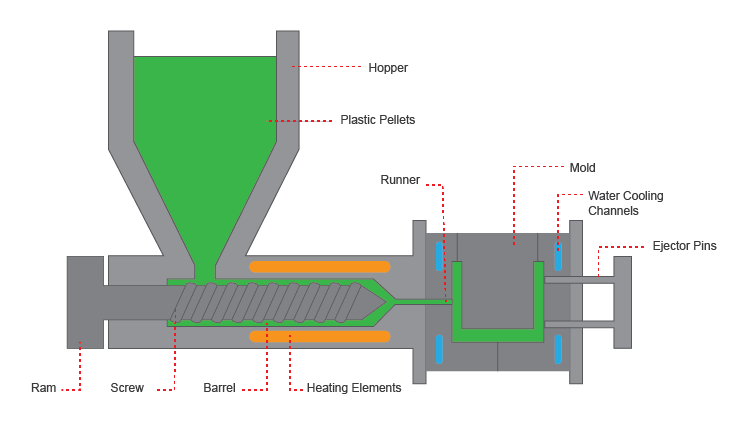Shaping Your Future: All About Injection Molds
Welcome to a world where manufacturing meets innovation through the fascinating technology of injection molds. These essential tools play a pivotal role in shaping the products that surround us daily, from intricate medical devices to everyday plastic items. Injection molds are the unsung heroes behind the scenes, embodying precision and efficiency in transforming raw materials into intricate designs, thanks to the injection molder. Let's delve into the realm of injection molds and unravel their significance in shaping the future of various industries.
Types of Injection Molding Processes
Injection molding processes can be categorized into three main types: conventional, two-shot, and insert molding.
Conventional injection molding is the most widely used method and involves injecting molten material into a mold cavity to form the desired shape. This process is suitable for creating various types of products, ranging from simple to complex geometries.
Two-shot injection molding, also known as 2K molding, enables the production of parts with two different materials or colors in a single operation. By using a specialized tool with multiple injection units, manufacturers can achieve enhanced design flexibility and product functionality.
Insert molding integrates pre-formed components, such as metal inserts or other parts, into the molding process. This technique allows for the combination of different materials and functionalities within a single product, resulting in enhanced strength and durability.
Key Components of an Injection Mold
An injection mold consists of several key components that work together to produce high-quality plastic parts. One of the main components is the mold cavity, which shapes the final product. The mold cavity is created with precision to ensure the desired outcome is achieved.
Another essential component of an injection mold is the core, which complements the mold cavity by forming the inner features of the part. The core and cavity are designed to fit together perfectly, allowing plastic material to flow smoothly and fill the entire mold.
Additionally, injection molds include cooling channels that help regulate the temperature during the molding process. Proper cooling is crucial for maintaining the integrity of the part and ensuring efficient production. The design and placement of these cooling channels are critical for achieving consistent and reliable results.
Benefits and Challenges of Injection Molding
Injection molding offers numerous advantages. One key benefit is its high efficiency in producing intricate and complex shapes with high precision. This process allows for mass production of identical parts at a rapid pace, leading to cost savings and increased productivity for manufacturers.
However, there are some challenges associated with injection molding. One common issue is the initial high costs involved in setting up the molds and equipment. Additionally, design flaws or material inconsistencies can lead to defects in the final products, requiring careful attention to detail and quality control measures throughout the production process.

Despite the challenges, injection molding remains a popular choice for manufacturing due to its versatility, speed, and ability to create products with uniform quality and accuracy. By understanding the benefits and challenges of injection molding, manufacturers can optimize their production processes and achieve successful outcomes.